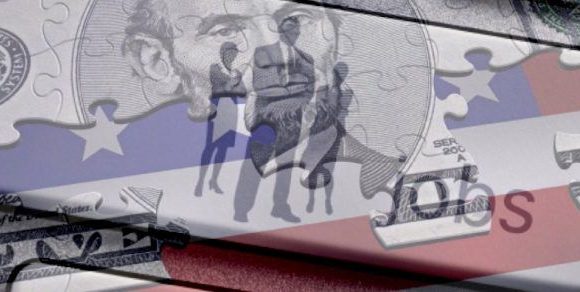Service sector positions fuel job growth in Arkansas
by August 11, 2020 6:12 pm 478 views

Service sector jobs in Arkansas are on the rise and it has reduced the COVID-19 unemployment rate, but gains may be undercut as states re-shutter businesses, according to an economic analysis by the University of Arkansas System Division of Agriculture.
The analysis by John Anderson, head of the agricultural economics and agribusiness department for the Division of Agriculture and the Dale Bumpers College of Agricultural, Food and Life Sciences, examined the July employment situation report from the Bureau of Labor Statistics.
“In July, employment continued to recover from the mass layoffs precipitated by the widespread COVID-induced shutdowns that began in March and extended into May in most states,” Anderson said. “This is the third consecutive month of historically strong job growth.”
Non-farm payrolls in the U.S. expanded by 2.725 million jobs in May and by another 4.791 million in June. In July, non-farm payrolls expanded nationally by 1.763 million jobs. However in April and part of May more than 40 million American jobs were cut.
“The July payroll figure, while showing historically robust job growth, also represents a significant slowdown in the pace of post-shutdown rehiring,” Anderson said.
He said the service-providing sector accounted for more than 1.4 million, or 80.7%, of July’s job gains.
“This shouldn’t be too surprising. Most of the job losses in March and April occurred in the service-providing sector,” Anderson said.
The jobs numbers may be on the rebound in some sectors in the state, but the overall economic metrics are staggeringly negative. During the second quarter, U.S. GDP dropped on an annualized basis by 33.9% – the largest drop ever recorded. The U.S. unemployment rate remains in the double digits. Arkansas is doing slightly better with an unemployment rate of about 8%, according to the latest figures released.
There is uncertainty looking ahead, Anderson said.
“The big question is whether the reopening-related job recovery will continue in August or whether it has basically been exhausted with the July figures,” Anderson said. “Certainly, many pre-COVID jobs remain unrestored: May-July job gains are still almost 13 million jobs short of March-April losses.”
“Significant headwinds to further employment gains do appear to be growing,” Anderson said, noting that several states have slowed or even partially reversed the pace of reopening as COVID-19 cases have grown.
“This may hamper further job growth, particularly in the services sector, where many shutdown-affected jobs are located,” he said.
Long-term effects of the pandemic-induced slowdown appear to be weighing a bit more heavily on the market as quarterly corporate earnings reports have begun to quantify the negative financial impacts of COVID-19, Anderson said.
“With the expiration of enhanced unemployment benefits at the end of July, many workers who were sidelined by the pandemic shutdowns will, more than likely, be aggressively looking for work in August,” he said. “Whether they find it or not will tell us a great deal about how the economic recovery is progressing.”
